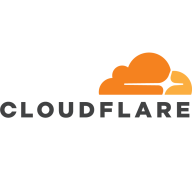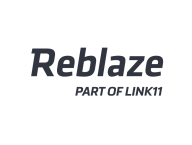


AWS WAF and Reblaze are in the web application firewall category. AWS WAF appears to have a pricing and support advantage, while Reblaze offers more robust features.
Features: AWS WAF users highlight its scalability, customizable rules, and strong integration with other AWS services. It offers effective threat filtering and quick deployment in the AWS ecosystem. Reblaze stands out with its real-time monitoring, DDoS protection, and comprehensive threat management, allowing users to efficiently track web traffic and potential threats.
Room for Improvement: AWS WAF could improve its user-friendly documentation and advanced automation features, as well as enhance bot protection and adopt a more intuitive billing model. Reblaze could benefit from enhancing its bot management, simplifying rule creation complexity, and providing more detailed automated reporting with a more navigable dashboard.
Ease of Deployment and Customer Service: AWS WAF is deployed in public and hybrid cloud environments, with scalability benefits from AWS infrastructure. However, technical support responsiveness can be a challenge. Many users appreciate AWS's good customer service, though support quality can vary. Reblaze offers straightforward deployment across public and private clouds, with users reporting satisfaction with their technical support and service quality.
Pricing and ROI: AWS WAF uses a pay-as-you-go model, viewed as cost-effective though pricing can increase with additional usage. Users recognize a return on investment through enhanced security. Reblaze offers a predictable pricing model with features bundled into a single price. While more expensive, users find the comprehensive security oversight and effective cost negotiation beneficial for long-term appeal.
WordPress security can be tricky, and that's where Cloudflare can be absolutely helpful for small businesses.
We have had ROI with the tool's use since it never gave us downtime and made us lose millions.
For the small project I was working on, using the basic tier provided a huge improvement at zero cost.
This would help us address issues promptly, especially during unforeseen events like DDoS attacks.
We'd like a dedicated account manager.
You can get a support engineer with the best qualifications.
I would rate the solution's scalability a ten out of ten since I didn't encounter any issues with it.
I rate its scalability a ten out of ten because I had no issues with it.
I rate the scalability a ten out of ten.
For DDoS protection, I would not recommend Cloudflare.
I rate the solution’s stability an eight out of ten.
The service is very stable with no impacts during high-traffic periods.
There's a need for improvement in areas like AI-based DDoS attacks and Layer 7 WAF features.
Despite these challenges, overall, Cloudflare remains the preferred solution compared to Azure, AWS CloudFront, and Google Cloud Armor.
the ability to integrate with the on-site active directory instead of just AD through Azure AD
Features like bot protection or DDoS mitigation, available with other WAF vendors, do not come natively with AWS WAF.
That's where Cloudflare shines for smaller businesses – it's ten times cheaper than Akamai.
I find it to be cheap.
It's cost-effective, but I think they should have a custom pricing model for enterprise customers based on the features you use.
Our scenario consisted of two web servers in different allocations to control access demands, and the load balancer did the job as expected, bringing security and stability to access points.
For me, the valuable feature is DDoS protection.
The most valuable features of the solution are performance and security.
The cloud-native nature of AWS is crucial since most of our workload is in AWS, making AWS WAF native to Amazon Web Services.


Cloudflare is a highly-regarded Content Delivery Network (CDN) and a Distributed Denial-of-Service (DDoS) protection solution. The robust global connectivity cloud platform that is Cloudflare ensures users are able to connect to the Internet quickly, securely, and reliably. Cloudflare is one of the world's largest networks in the marketplace today. Using Cloudflare, businesses, educational entities, NGOs, vloggers, bloggers, and anyone else with an internet presence can experience more secure, faster websites and applications.
Currently, there are millions of Internet locations on Cloudflare, and the Cloudflare network
continues to grow every day by the thousands. The solution is able to fulfill the requests for
millions of websites seamlessly and serves on average 45 million HTTP requests per second.
Cloudflare has safe, secure data centers in close to 300 cities worldwide to ensure every
client request is filled as quickly as possible. It is Cloudflare’s edge network that makes this
possible by keeping content and other services as close to each client as possible, so the
information requests are always only seconds away.
Many organizations that work in democracy, civil society, human rights, or the arts are able to
access Cloudflare's highest levels of protection for free via Project Galileo. Additionally, official
election websites can be secured from hacking and fraud through Cloudflare’s Project
Athenian, also at no additional cost.
Cloudflare can also help organizations of all sizes develop a robust zero-trust strategy to
ensure the highest levels of productivity and profitability. Employees, stakeholders, and end users have a greater level of satisfaction and overall improved user experience, which can, in
turn, result in higher revenues and overall ROI. Zero-trust and BYOD (bring your own device)
access ensure end users and employees always have the best resources and technology
available to them at all times.
Cloudflare benefits
Cloudflare has many benefits. Some of its most valuable benefits include:
- Faster load times
- Robust DNS security
- Intuitive cloud Web Application Firewall (WAF)
- Free universal SSL
- Image enhancement
- Automatic browser caching
- Next-generation cloud load balancer
- Accelerated Mobile Pages (AMP)
- Rate limiting
- Minification
- Zero-trust capabilities
- Cost-effective
- Reduced carbon footprint
Reviews from real users
“Many websites require an SSL certificate because they sell stuff and want SSL. Cloudflare
comes with an SSL certificate built in. It's automatic. You sign yourself up for Cloudflare, and
an SSL certificate automatically protects your website. If you have a connection between your
website and your host, the server, Cloudflare, and the host, you don't necessarily need a
certificate.” Spencer M., Owner at Tech Exchange
“What I like best about Cloudflare is that my company can use it to trace and manage
applications and monitor traffic. The solution tells you if there's a spike in traffic. Cloudflare
also sends you a link to check your equipment and deployment and track it through peering,
so it's a valuable tool.” Daniel P., Network Engineer at Ufinet
“The most valuable feature of Cloudflare is the GUI. You are able to control the solution very
well through the interface. There is a lot of functionality that is embedded in the service.” PeerSpot user, Competence Center Manager at a tech services company
AWS Web Application Firewall (WAF) is a firewall security system that monitors incoming and outgoing traffic for applications and websites based on your pre-defined web security rules. AWS WAF defends applications and websites from common Web attacks that could otherwise damage application performance and availability and compromise security.
You can create rules in AWS WAF that can include blocking specific HTTP headers, IP addresses, and URI strings. These rules prevent common web exploits, such as SQL injection or cross-site scripting. Once defined, new rules are deployed within seconds, and can easily be tracked so you can monitor their effectiveness via real-time insights. These saved metrics include URIs, IP addresses, and geo locations for each request.
AWS WAF Features
Some of the solution's top features include:
Reviews from Real Users
AWS WAF stands out among its competitors for a number of reasons. Two major ones are its user-friendly interface and its integration capabilities.
Kavin K., a security analyst at M2P Fintech, writes, “I believe the most impressive features are integration and ease of use. The best part of AWS WAF is the cloud-native WAF integration. There aren't any hidden deployments or hidden infrastructure which we have to maintain to have AWS WAF. AWS maintains everything; all we have to do is click the button, and WAF will be activated. Any packet coming through the internet will be filtered through.”
Reblaze provides real-time monitoring, reporting, and botnet protections, enhancing security management with agile customization. Its intuitive dashboard supports efficient decision-making, while flexible rules and geo-blocking ensure security across geographies.
Reblaze is primarily deployed for web application firewall (WAF), DDoS prevention, and bot management, effectively defending against Layer 7 DDoS, phishing, SQL injections, cross-site scripting, and unwanted IP traffic. Supporting both public and private cloud deployments, including Amazon-hosted applications, Reblaze filters malicious activities to safeguard internet businesses. Users appreciate its comprehensive security approach, particularly for mobile app protection through its API and advanced filtering against script injections. Room for improvement includes change management, automation, reporting alerts, session management, and more granular WAF features. Adjustments in pricing and enhancements for bot management and bad IP address databases are sought after.
What are Reblaze's Most Important Features?In finance, Reblaze addresses the stringent demands of data protection. E-commerce platforms benefit from its robust perimeter defenses against typical threats. Healthcare industries utilize its capabilities to secure sensitive patient data, leveraging both real-time monitoring and responsive alert systems to maintain compliance and integrity.
We monitor all Web Application Firewall (WAF) reviews to prevent fraudulent reviews and keep review quality high. We do not post reviews by company employees or direct competitors. We validate each review for authenticity via cross-reference with LinkedIn, and personal follow-up with the reviewer when necessary.